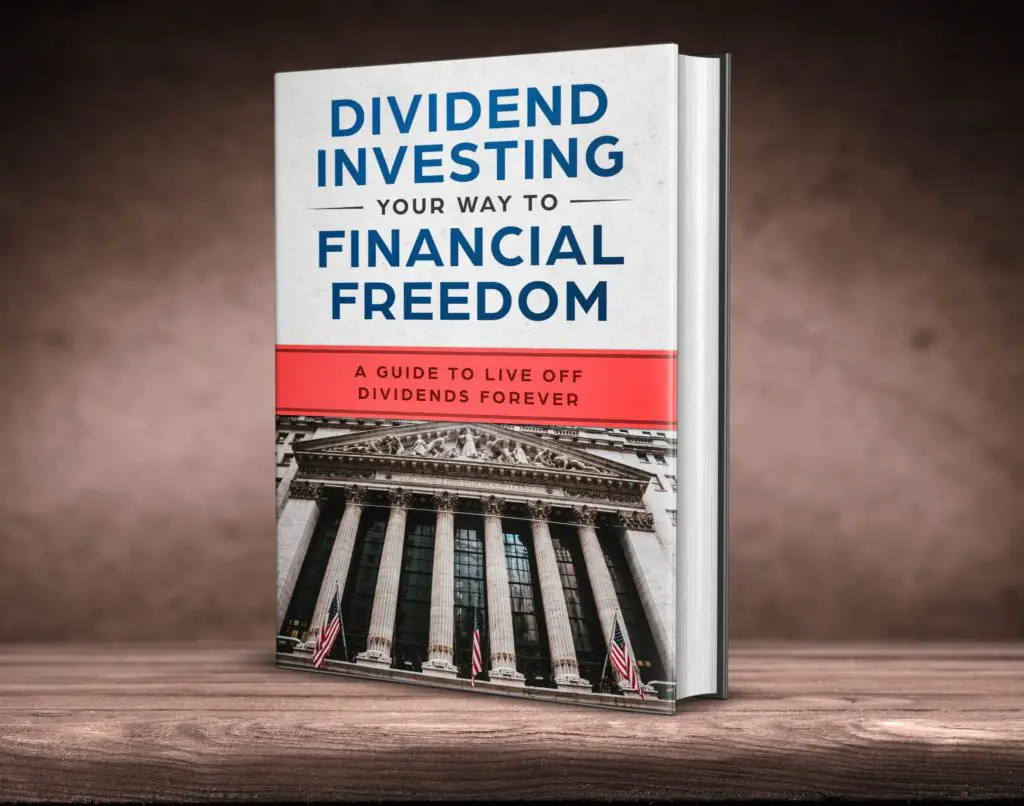Financial ratio analysis is crucial for dividend growth investors. In order to maintain dividend growth, a company must be in excellent financial condition. Here is a list of formulas for financial ratios that should be use by every expert or inspiring investor. These are my personal favorites that guide my analysis of financial ratios. Financial ratio analysis doesn’t need to be complex. Just follow these important financial ratio formulas and explanations to solidify investing success.
7 Key Financial Ratios to Conduct Ratio Analysis
Financial ratio analysis is a core component of any investment opportunity. For any value investor, you must conduct a level of analysis that is quantitative and removes any emotional component to your investment strategy.
I like combining my dividend investing strategy with value investing to find outstanding businesses at attractive valuations.
Thus, I wanted to provide you the expert level financial ratio formulas and explanations that can help you become a better investor instantly.
I created a book titled Dividend Investing Your Way to Financial Freedom that will help you think about investing the same way I do. It received a #1 New Release in Stock Market Investing!
You can read more about why I created a dividend investing book to learn more about my philosophy.
What are financial and investment ratios?
Financial ratios help investors understand how to invest in a company. Financial ratios often help discover aspects of businesses that are undiscoverable through solely looking at the financial statements of a company.
You can generate investment ideas by subscribing to different research providers like Motley Fool or GuruFocus.
You can read more about my Motley Fool Stock Advisor review to learn more about how it can help you with your investing goals.
These financial ratio formulas and explanations should you position you for succes by the time you are done reading this.
Go out and make your name in the investing world.
Investors should be savvy in their investing strategy. By using financial ratio analysis, investors can find great opportunities for investment beyond implied pricing multiples.
These financial ratios can help you find holes in dividend stocks that prevent downside risk and boost your investment portfolio returns.
What are financial ratio formulas?
Financial ratios are a calculation using existing financial information to determine the financial health of the company. These ratios are used for comparative purposes. Investors should realize that these financial ratios are benchmarks and each indicator should be evaluated further to understand why the metric is higher or lower than their peers.
There are also personal financial ratios that you should know. Check out our 19 key personal financial ratios that you must know.
Why financial ratio analysis is important
A dividend growth investor needs to have a prudent plan and criteria for investing in dividend growth stocks. I see too many dividend investors invest in stocks solely because of their annual dividend yield. Yes, the annual dividend yield is a great barometer for how much income you can receive from your investment, but income is not the only part of the equation.
By investing in dividend stocks, we are seeking to maximize dividend income AND long-term capital appreciation. In order to achieve both of these characteristics, we must invest in quality businesses that are in excellent financial shape.
The best way to analyze the financial condition of a company or stock you must conduct financial ratio analysis.
Keep in mind financial ratio analysis is not an end all be all. In a recent Stanford publication done by David Larcker titled The Stock Market’s Pricing of Customer Satisfaction, the stock market has a value-relevant sensitivity to the American Customer Satisfaction Index (ASCI). However, the ASCI cannot be used to generate abnormal long-run returns.
I like buying businesses that have strong customer appreciation for their products or services.
List of Investment Ratios Every Dividend Investor Needs to Know
These are my favorite investing ratios that will help you become a better dividend investor. Investing in the stock market takes a dynamic ability to find value both through quantitative analysis as well as a qualitative review.
I like using this list of investment ratios to ensure that I am accurately filtering stocks that meet my investment criteria.
These investing ratios take away from the emotional side of investing and let you stick to the cold hard facts even in light of volatile stock markets.
There are no barriers to entry for investing in public stocks. What’s your excuse?
You just need to learn how to read financial statements and understand how businesses operate.
Here’s a guide to help you learn how to read financial statements.
Let’s get into the most important financial ratio formulas and explanations that you need to know.
1. Price/(Earnings Per Share Less Dividends Per Share) Ratio
I created this writeup nearly solely for this analysis of this exact ratio. I love the analysis to find a true value of a dividend growth stock on a go-forward basis. To calculate this financial and investment ratio you simply take the stock price divided by earnings per share less dividends per share.
Here is an example of Price to Earnings Per Share Less Dividends Per Share.
To do this, screen for stocks that pay a dividend using FINVIZ.
Then, sort by PE ratio from the lowest to highest. Follow my dividend screener criteria for more information.
From there, take the earnings per share and remove dividends per share from EPS. This will give the you the best metric for earnings being reinvested into the business on a price basis.
This is such a good metric of an undervalued stock on an EPS (less dividends per share) basis to ensure that you are still getting sold value in the absence of dividends.
2. Free Cash Flow Yield
My favorite fundamental indicator. I love cash flow both for my personal finances and more importantly for businesses. People pay multiples of cash flow for a business, but will NEVER pay multiples off my personal cash flow. I’d rather have my ownership in a cash flow business than my personal cash flow.
The formula for free cash flow yield is total free cash flow for a company divided by market capitalization (or equity value) of a company. If you want to build wealth, own businesses with outstanding free cash flow.
Grow that free cash flow. Recycle into the business and then sell it.
What is free cash flow? Free cash flow is always a millionaire dollar question.
I like to take just a cold hard cash flow from operations on the statement of cash flows.
3. Shareholder Yield
My favorite indicator for a company that rewards their shareholders. This is debatably the most important ratio of our financial ratio formulas and explanations. Shareholder yield is a barometer of how much a company rewards their shareholders either through dividends or buybacks.
To calculate shareholder yield, you simply take dividends plus share repurchases divided by market capitalization (or equity value) of a company. I’m a big fan of company’s that buyback stock but also pay a dividend.
These companies have a dual effect of value appreciation. For every share they repurchase, this increases your ownership value. By increasing your ownership value, you are in fact receiving more in dividends.
To do this just look at the financial statements of the company and divide it by the current market value of equity.
If I’m getting a 10% shareholder yield on my investments, I’m a happy man.
Shareholder yield is a way to take dividend investing to the next level. You simply earn the best of both worlds.
4. Current Ratio
I can’t stress how underrated current ratio is in investing. This ratio helps me understand the balance sheet of a company on a working capital basis. I want to ensure a company has sufficient cash and current assets to cover off current/near-term liabilities. The calculation of current ratio includes:
Current Assets / Current Liabilities
I like to see a business with a current ratio above 1.3-1.5x depending on the industry. This gives me comfort that a company will be around for years to come. This is how to evaluate the capital stack with your investments.
5. PEG Ratio (PE Ratio to Earnings Growth)
This is the single best metric we have to rationalize a PE ratio. This effectively measures the fact of what is a reasonable PE ratio relative to expected future earnings growth. To calculate PEG ratio, you do the following:
P/E Ratio divided by expected earnings growth (in actual numbers, not percentages)
For example, if a company had a PE Ratio of 20x, you’d typically want forecasted earnings growth to be 20% or higher.
I only like to invest in stocks with a PEG ratio of less than 1.0x.
6. Price to Book Ratio
The balance sheet? Who looks at that?!?! Just kidding. The balance sheet is very important and investors often overlook it. Don’t. With Price to Book, you can get a good understanding of where the stock trades relative to the balance sheet or the shareholder equity on the balance sheet.
It’s pretty simple to calculate the price to book ratio.
Take the price of the stock and divide it by the book value per share. I don’t like stocks with a messy balance sheet. This can make earnings per share misleading. Just invest in stocks with a P/BV of around 1.50x depending on the industry.
Anything outside of that will take some serious investigating as to why it is trading at that ratio. Do you want to do thorough book value analysis? Didn’t think so. If it doesn’t meet your criteria move on.
7. Dividends, Of Course!
Millionaire Mob & dividends? Shocking! If you are investing in undervalued businesses, what’s better than collecting dividends while you wait for the stock to hit market value.
By collecting a dividend, you are instantly recouping your principal investment from day one (albeit a small amount). Remember, we want to invest in dividend stocks that have a very high likelihood of increasing dividends in the future.
So, don’t rely on dividend yield to be your answer. However, use a simple financial ratio analysis of yes or no. Does the company pay a dividend?
You can check what it takes to live off dividends by using our DRIP calculator.
The dividend investing calculator is very simple to use and input your own assumptions. It literally only takes 5 minutes!
Conclusion on Using Investment Ratios to Invest in Dividend Stocks
Don’t be motivated by the simplicity of things. Use your knowledge to make conscious decisions for investing.
These financial ratio formulas and explanations can take your investment portfolio to the next level.
You always have to look into the quantitative analysis that will remove any emotional impact for investing. If it doesn’t meet your investment ratio criteria, then kill it. There will be plenty of other investment options to go off of down the road.
Investing is always the most optimal way to build wealth.
There are a million ways to make money in the stock market and through investing. Taking unnecessary risk is not something that is a fruitful strategy.
Just remember…
There are no barriers to entry with investing. Anyone can do it if you work hard at it. Did you know that there are brokerages that will simply give you free stock just for signing up? That’s a great no-risk way to start investing. Consider one of the investing apps to start investing.
What do you think of these financial ratio formulas and explanations? Let us know in the comments below. We’d love to hear from you.
Related Resources:
- Downloadable Stock Calculator to Help You Invest
- How to Invest Money: Investment Tips Every Investor Should Know
- Best Robo-Advisors Compared
Subscribe to the Millionaire Mob early retirement blog newsletter to find the best travel hacking tips, dividend growth investing, passive income ideas and more. Achieve the financially free lifestyle you’ve always wanted.
Join our community of over 3,000 mobsters seeking financial freedom. What are you waiting for?









No Comment